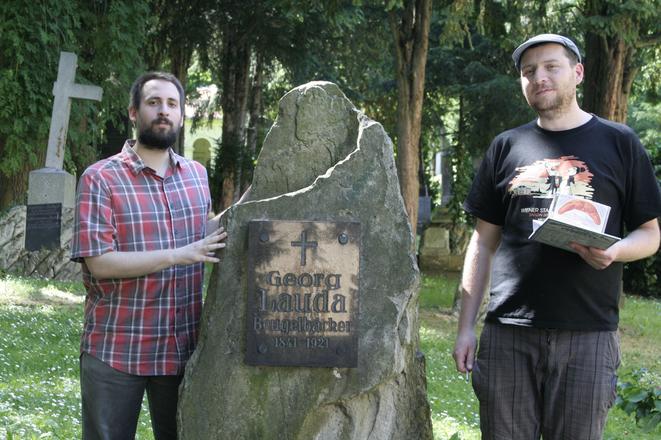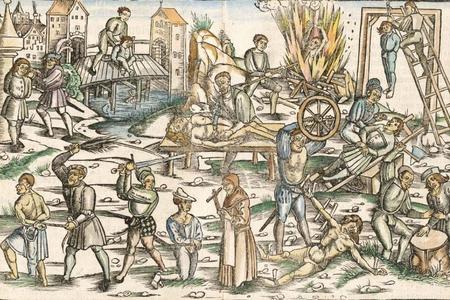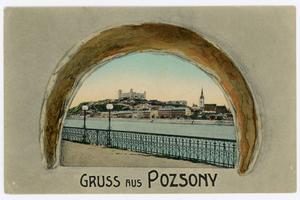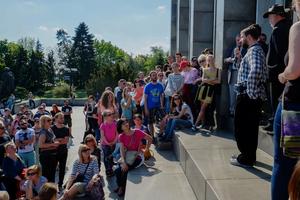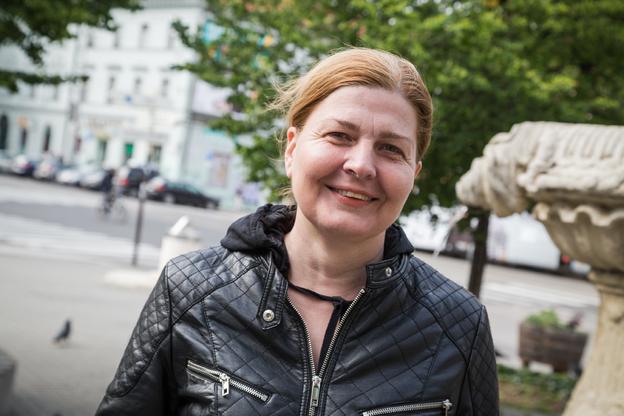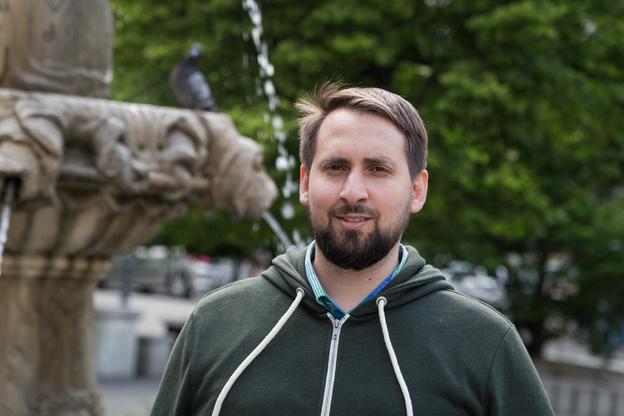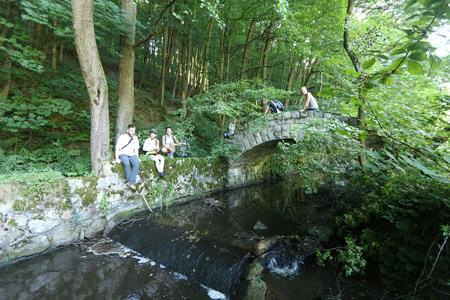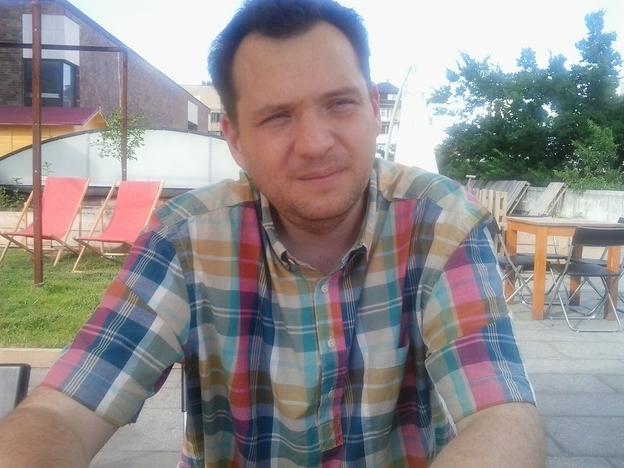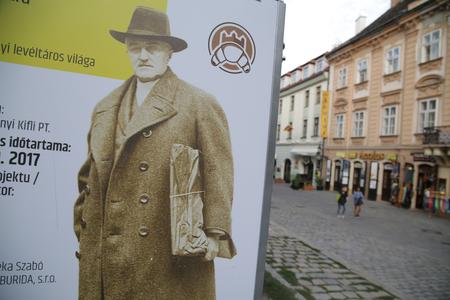They love Bratislava and it hurts them when people living in the capital city don’t like it. Realising that this is primarily due to ignorance and that liking something is nothing that can be forced, in 2010 they launched the Bratislavské Rožky civic association, named after the popular local pastry called Bratislava Rolls. They organise lectures and tours, collect old postcards and photos, publish books and digitise historical materials. And their dream is to launch the Museum of Bratislava Rolls. We talked about the association and its activities with their creators Eva Bolemant, Sándor Papp and Ján Vyhnánek.
The Slovak Spectator (TSS): Why did you launch the Bratislavské Rožky civic association?
Eva Bolemant (EB): Bratislava doesn’t deserve what’s been going on here for years: people who don’t know it and not having any relationship to the city spend their whole lives here. This then reflects on how the city looks and what’s happening here. That’s why we decided to present Bratislava the way we see it – as a city with a rich and interesting history.
Sándor Papp (SP): In the past, Bratislava’s history was not so popular as it is now. Today, there are a number of websites or various databases. We were actually the first ones to be more active on the internet. We were aware of the fact of what an important medium the internet is. So we created a website dedicated to the history of Bratislava.
TSS: In what languages do you run the website?
EB: We are both Hungarian nationals, but Bratislava has always been trilingual, so we have a trilingual page. At first we did it only in Hungarian and Slovak. Three years ago we added the German version. However, we don’t publish everything in German that comes out in the Slovak and Hungarian versions since we don’t have money to pay for editorial and translation work.
TSS: Why did you name your organisation Bratislavské Rožky?
SP: We had different ideas, such as We Love Bratislava or I Love You, Bratislava. Finally, we chose Bratislavské Rožky, Pozsonyi Kifli in Hungarian or Pressburger Beigel in German, as they were once a symbol of the city. When you study old newspapers, you can see advertisements for these rolls everywhere. They were truly world-renowned, also exported to America and India.
EB: Moreover, at the time we were founding our association they were almost forgotten. They were baked only at home and I think that also thanks to our association several bakeries are once again baking excellent Bratislava rolls. Now it’s not a problem to buy them.
TSS: What kind of books do you publish?
EB: These are mostly children’s books. In the Bratislava Fairy Tales series we publish books written specifically for it about personalities connected to Bratislava. I wrote the first one, about the inventor Wolfgang Kempelen. Books from other authors followed: about the composer Béla Bartók, the architect Ödön Lechner, who designed the popular Blue Church, as well as the Hungarian political reformer and writer István Széchenyi.
This year we also launched a new edition, a technical one about the already ceased technical, industrial and transport elements of Bratislava. The first book published in this edition is about the legendary Vienna tram, which used to run between Bratislava and Vienna. So far, we have been publishing books in both Slovak and Hungarian. The latter was published, by an Austrian publishing house, in German, too. This November we will also publish a collection of Bratislava Jewish fairy tales and a book about Ferdinand Martinengo, Bratislava’s personality and supporter of sports, especially fencing.
SP: Furthermore we plan to publish in cooperation with historian Július Cmorej a book about the history of Bratislava rolls, including the recipe. But we firstly want to find and identify in the archive material all the bakers who baked the rolls in former Pressburg. In December 2016 we published a Slovak-Hungarian-German-English brochure about the history of this pastry. In it we refute the information that the first rolls were baked in 1785. The first report about the rolls, based on our research so far, dates back to the 16th century.
TSS: You joined the Bratislavské Rožky association only some years later.
Ján Vyhnánek (JV): In 2013, I found on the association’s website that they are digitising the estate of archivist Ján Nepomuk Batka, a prominent personality of Pressburg, now Bratislava, in the 19th century. He passed on his entire rich archive to the city. Batka was not only an archivist, but also music critic, publicist and organiser of musical life in the city. He corresponded, for example, with Franz Liszt and Béla Bartók. So I asked whether I could help them with the digitisation. When we met we found out that we share common interest in old Bratislava, and that we would like to promote it more among people.
TSS: What are you in charge of at the association?
JV: Mainly organising thematic walks and lectures in Slovak. We try to organise the walks so that people can get to places where the ordinary visitor cannot get. We invite experts such as historians or architects for these events. Initially, we organised thematic walks around the city during the tourist season. Later on people were also asking for winter lectures. Both types of events are very popular. For example, up to 350 people came to see the WWII memorial of Slavín. Tours of the Jewish cemetery or synagogue are also popular, as well as cemeteries and churches. We organise walks on historical streets such as in the Panenská - Konventná - Kozia tour. But we don’t just look at historical themes. For example, we organised a tour of the inverted pyramid of the Slovak Radio and the Bratislava Crematory.
TSS: Where are the winter lectures held?
JV: Initially we held them at the Hungarian Institute. When the interest exceeded capacity, we moved to the University Library. We even outgrew this space and since May we have held lectures in cooperation with the Bratislava City Museum in Apponyi Palace.
TSS: What materials has the association digitised so far?
SP: We have a database of old Bratislava postcards on our website. Its core is the collection of Juraj Horváth, who provided us with more than 6,400 postcards for digitising. Today we have more than 25,000 digitised historical postcards and photographs in our database. We cooperate with various institutions and we have a very good relationship with the city museum, the Archive of Bratislava and others. Now prominent experts with whom we previously didn’t even think we would ever work with are approaching us, such as the famous postcard collector Július Cmorej and Albert Marenčin from the Marenčin PT publishing house. We provide historical photos for their publications.
TSS: You have also put the Ortvay database of historical streets from 1905 in an online version.
SP: The Tivadar Ortvay database is the most famous topographic work on historical Bratislava. We wanted firstly to create a glossary where people would find what name a given street had in the past. Finally, we created an online topographic lexicon. It contains historical street names in German and Hungarian as well as their current names. If you click on that street, it will pop up and show what it was called a hundred years ago and how its name changed over the years.
TSS: You also have a Family Photo Album section on your website.
SP: So far we have received photo albums of about 10 families for digitising. We digitised, for example, photos from the family albums of Pressburg native Monika Schweighoferová. We also digitised photographs from a royal army training centre in Schloss Hof near Bratislava. Apart from albums, we digitise other period materials, for example, restaurant menus.
TSS: How do you attain these materials?
EB: In various ways. It helped a lot when we started participating in events like Old Market, Good Market, the Open Courtyards of Kapitulská Street and the Christmas markets. Bratislavans stop at our stand and in particular the older ones tell us where they used to live, what was there, and often provide old family photo albums or other documents for digitising.
SP: Like this we have come across old glass negatives from the early 20th century. We digitised these in cooperation with historian Juraj Šedivý, who runs the Memory of Bratislava database. Later, we published a 2016 calendar from their selection.
TSS: What events have you organised this year or what will you organise in the upcoming months?
SP: This December it will one hundred years since the death of archivist Ján Nepomuk Batka (1845-1917). On this occasion, we held an open air Slovak-Hungarian exhibition about Batka on Rudnayovo Square. We would also like to digitise the Pressburger Wegweiser period directories. They were published from 1840 to 1916 and were written in German, in the Schwabacher. They contain all the companies and addresses of Bratislava’s citizens from that time. If we manage to digitise and put them online with a modern search engine, not only experts from Slovakia but also foreigners would appreciate it.
EB: We want to continue with walks and lectures. We plan to modernise our website. And we will continue to write articles about historical Bratislava, its location and popularising them.
TSS: What are your plans for the future?
SP: We would like to very much create a modern multimedia museum about Bratislava rolls. There would also be a bakery where visitors would see how the rolls were being baked and eventually they could try to bake them too. Such exhibitions are popular abroad, and we believe it would be successful here. But first we need the space and money for something like that.


